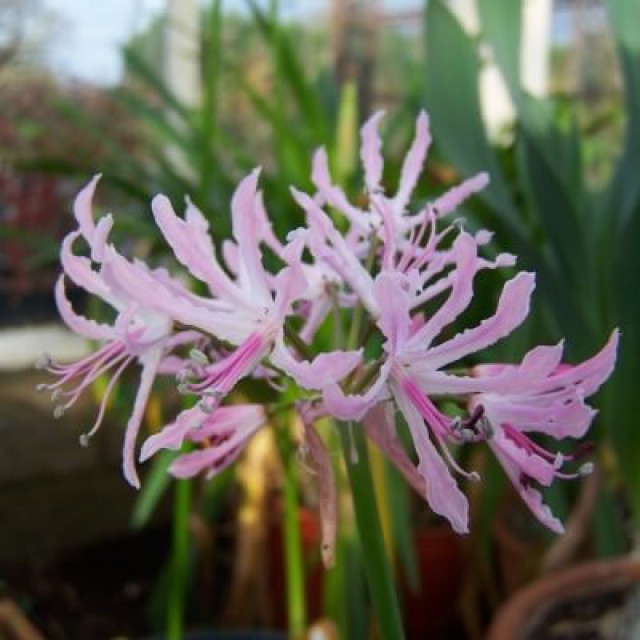- 13 September 2012
- Andrew Jordan
If you want to carry over brilliant colour in your garden during the autumn months this is the plant for you. Genus of bulbs, grown for their spherical heads of exotic looking wavy-petalled, pink to red, occasionally white, faintly scented flowers.
If you want to carry over brilliant colour in your garden during the autumn months this is the plant for you. Genus of bulbs, grown for their spherical heads of exotic looking wavy-petalled, pink to red, occasionally white, faintly scented flowers.
The fresh green strap-like leaves appear after the flowers, at the base of the plant. The petals stay fresh for a long time when the flowers have been picked making them ideal for cutting.Tolerant of low temperatures provided they are not too wet, they originate from South Africa so will be happiest in a freely draining soil where they can bake in full sun. They flower best when they are congested, so work well in pots and containers.
There are about 30 species, but only a few are generally cultivated. N. bowdenii, N. sarniensis, N. flexuosa ‘Alba’ and N. filifolia are most widely grown in the UK. N. bowdenii is the only reliably hardy species, coming as it does from 3,000m up in the Drakensberg mountains.
Growing
They need the sunniest spot, best protected and light, sandy soil. They don’t like to compete, they prefer to have the place to themselves.
Bulbs – Plant shallowly with their neck just above the surface of the soil at 10 – 15cm intervals from April onwards. They are happiest in a dense clump, so once planted avoid disturbing the roots and only lift and divide them when they have outgrown their alloted space.
Propagation
Propagate by seed when fresh or divide offsets in autumn or when leaves have died down.
By seed – wait until the fat rounded seed capsule is bursting and extract the seed, sowing straight into pots or trays of loam-based compost mixed with washed sand. Lightly cover with more compost and water well, using a fine rose. Keep in lightly shaded place (under a greenhouse bench). Water again only when the first leaves appear.
By offsets – Gently remove the offsets and line them out in a protected part of the garden or, ideally, pot them up individually in loam-based compost mixed with washed sand. Water immediately and thoroughly and then only when compost becomes dry.
Planting companions
Dark purple or silver foliage plants are good, together with markedly paler or darker flowers, perhaps white or palest pink, ruby, crimson, lavender, or deep purple. It is especially effective with shorter Aster amellus, A. x frikartii, and A. novi-belgii cultivars, and dark-leaved coleus.
Other perfect partners – Artemesia stelleriana, Chrysanthemum yezoense, Convolvulus cneorum, Helichrysum petiolare, dark-leaved Heuchera, Liriope cultivars, Pelargoniumb ‘Lady Plymouth’, smaller Phormium such as ‘Bronze Baby’, Sedum telephium (Atropurpureum Group) ‘Purple Emperor’, Solenostemon ‘Palisandra’.


